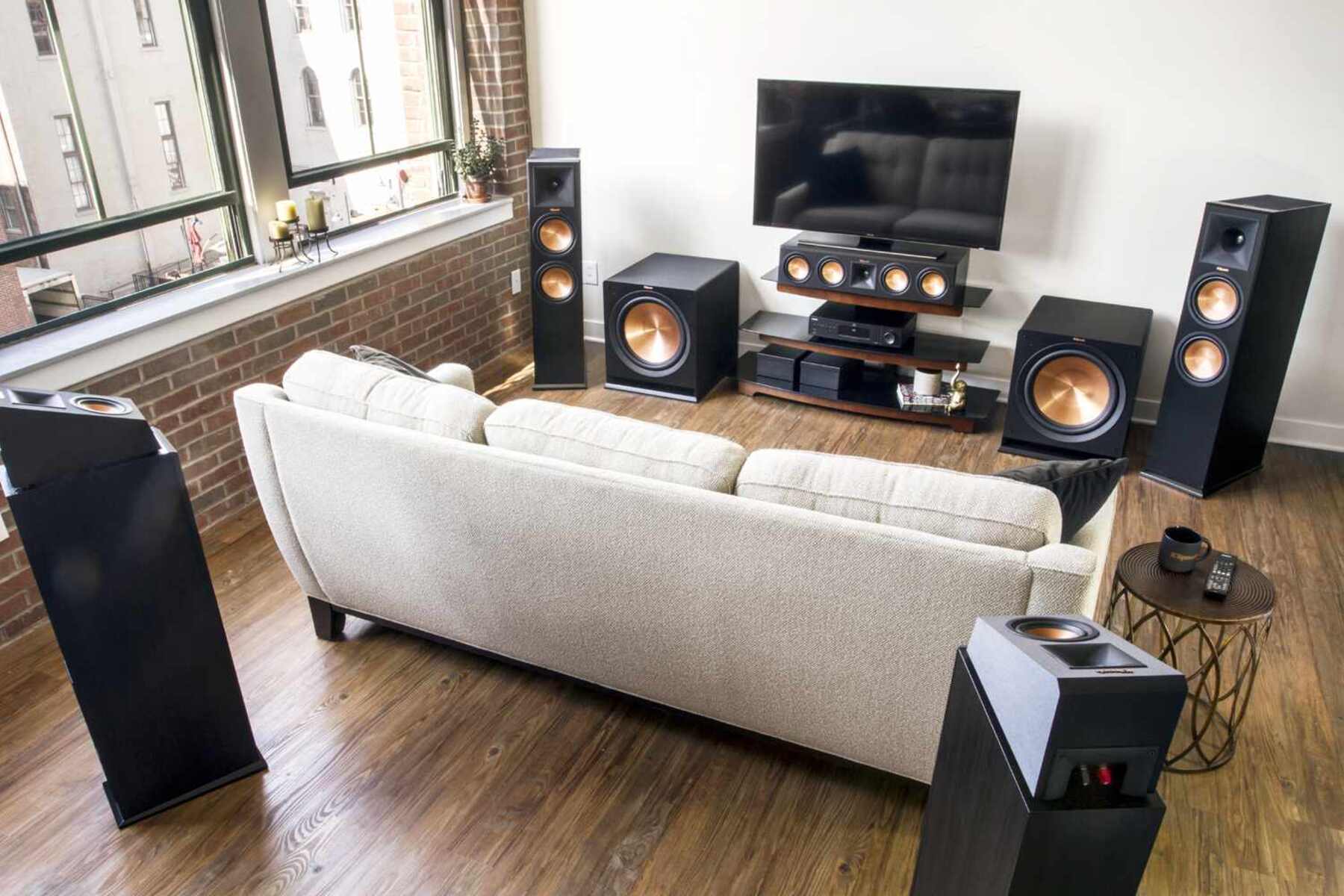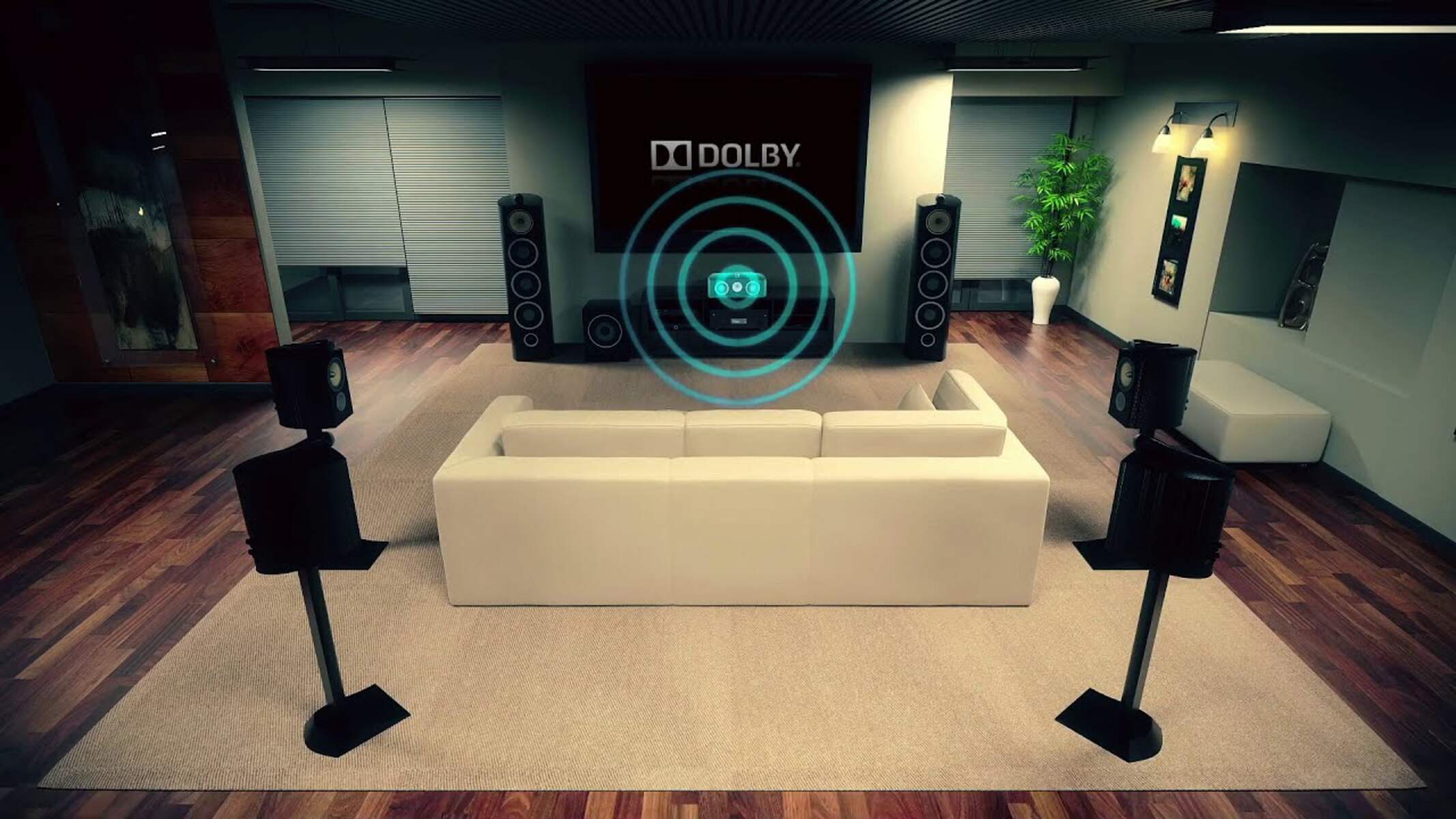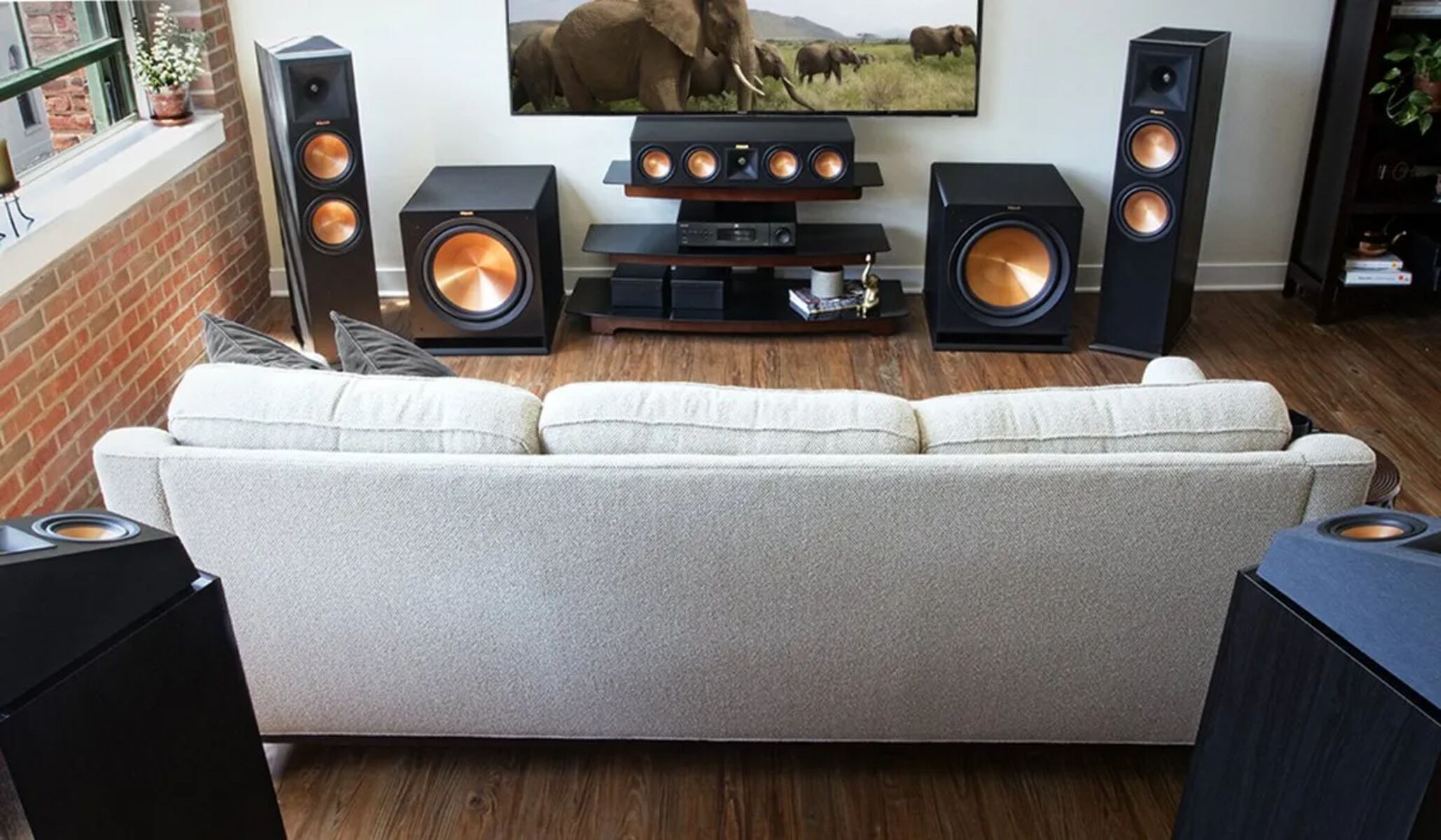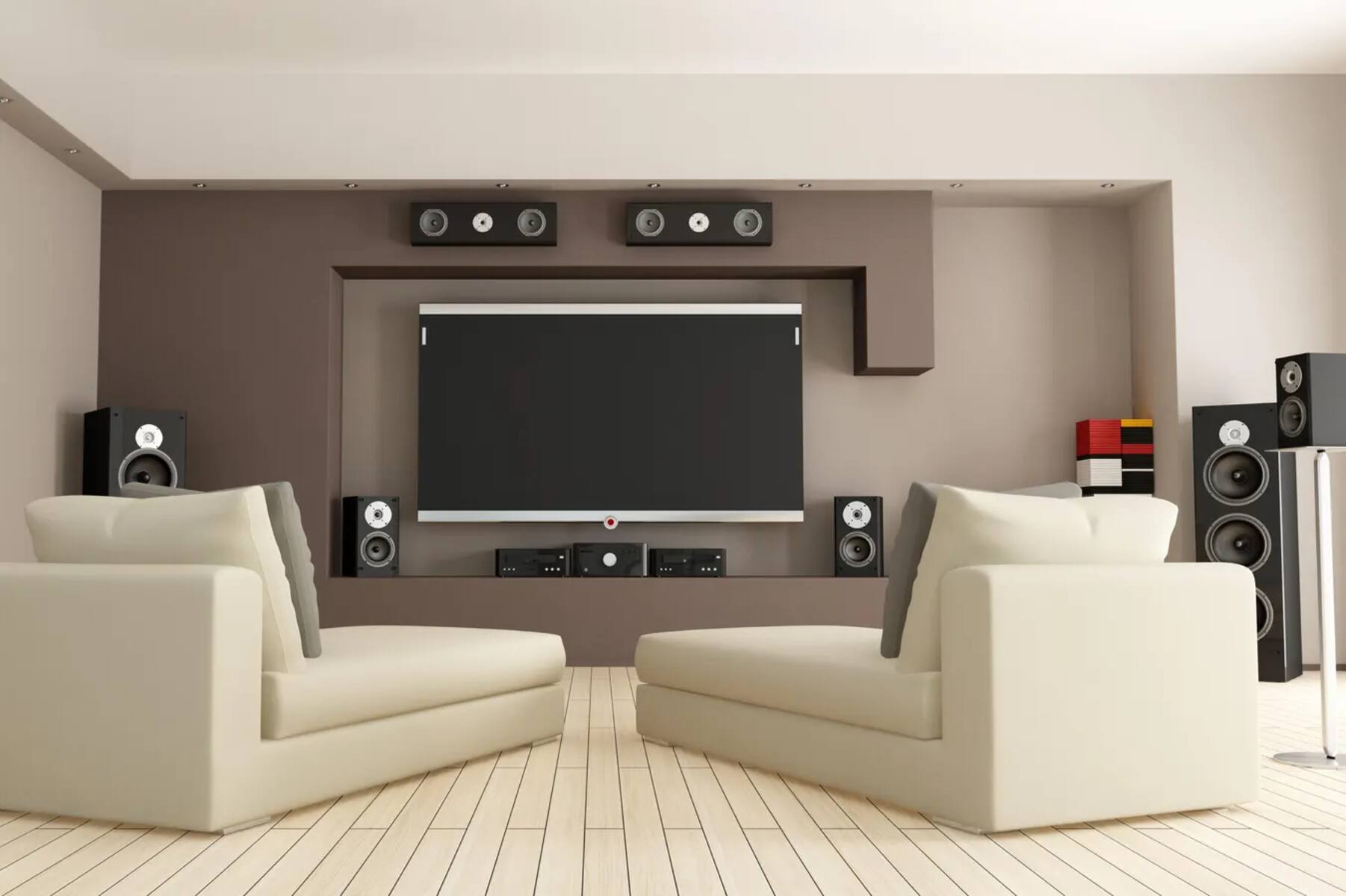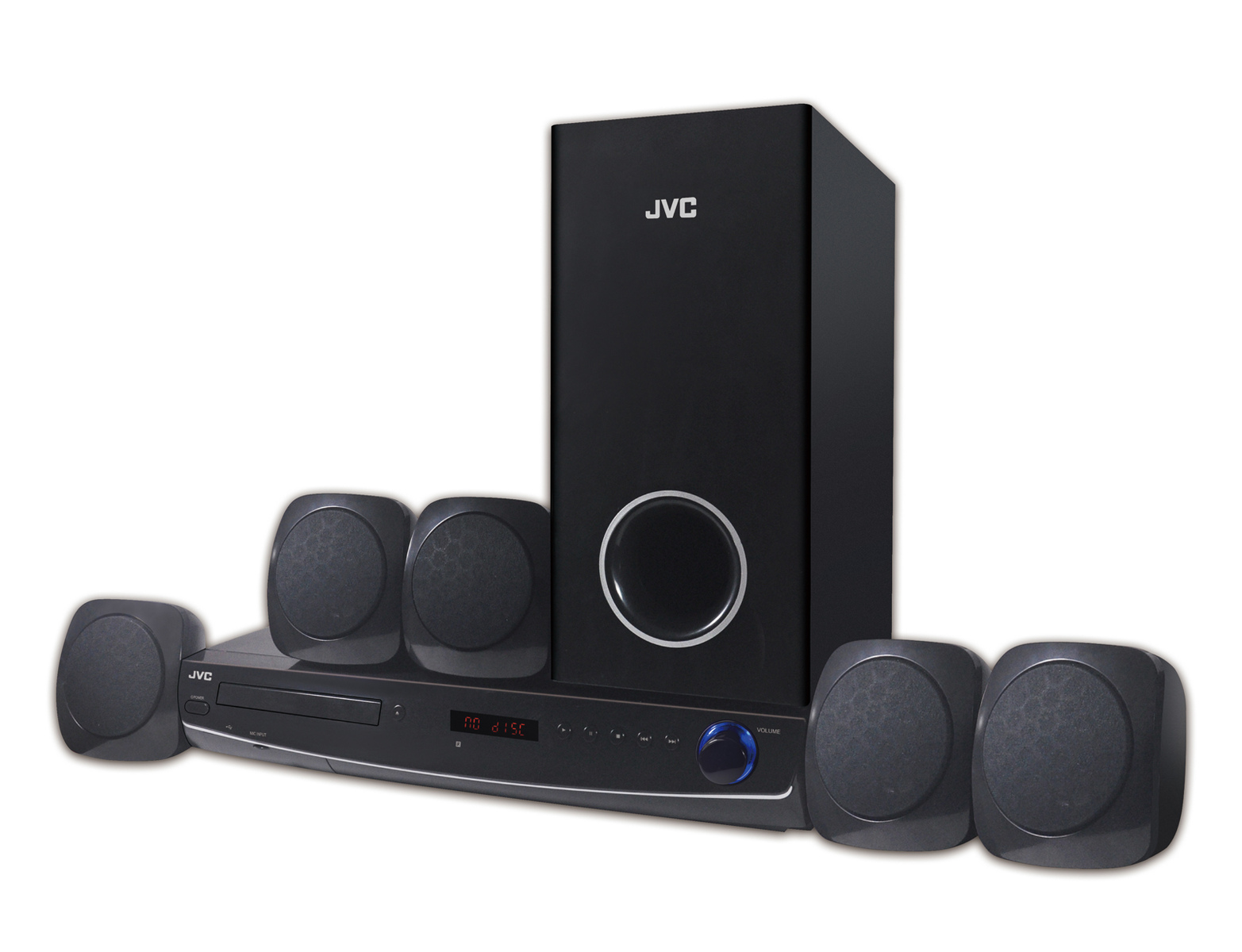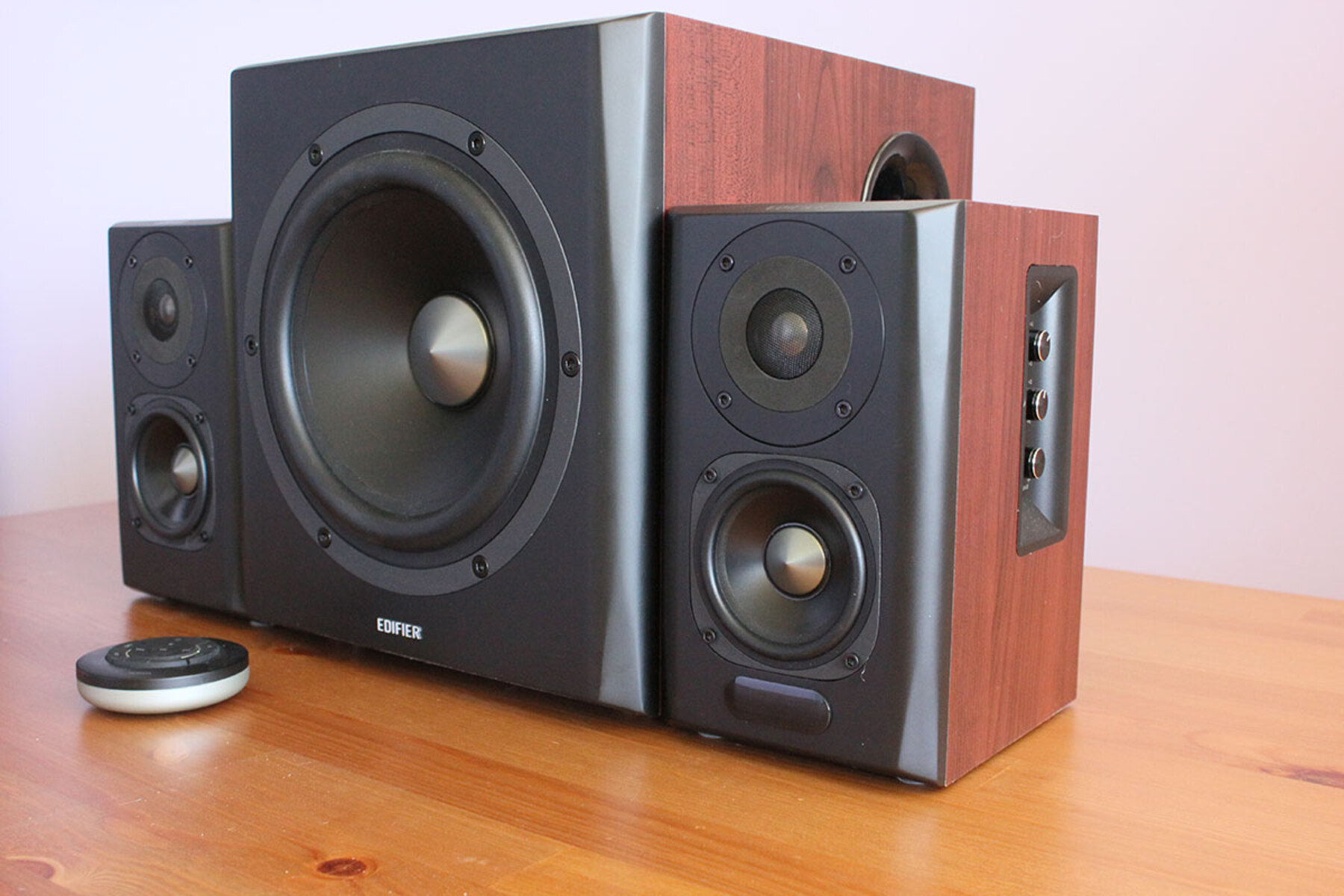Introduction
Welcome to the world of immersive audio with Dolby 7.1 Surround Sound! In this article, we will delve into the fascinating world of surround sound systems and specifically focus on the Dolby 7.1 configuration. If you’re a movie enthusiast, audiophile, or simply someone curious about audio technology, then you’re in the right place.
Over the years, advancements in technology have radically transformed the audio experience, bringing it closer to reality. One such advancement is the implementation of surround sound systems, which aims to recreate a lifelike audio environment by utilizing multiple audio channels positioned strategically around the listener. Dolby 7.1, in particular, offers an unparalleled audio experience that can truly make you feel like you’re in the midst of the action.
Whether you’re watching a blockbuster film, playing a video game, or enjoying music, a Dolby 7.1 Surround Sound system delivers an immersive and realistic audio experience. By strategically placing speakers throughout the room, this setup provides a multidimensional soundstage that enhances the overall enjoyment of your audio content.
In this article, we will take a closer look at the different channels that make up a Dolby 7.1 Surround Sound system and understand their significance in delivering an immersive audio experience. We will explore the various front, rear, center, side, and overhead channels, as well as the crucial role played by the subwoofer channel in reproducing low-frequency sounds.
So, buckle up and get ready to dive into the world of Dolby 7.1 Surround Sound as we demystify the components that bring your entertainment to life!
Overview of Dolby 7.1 Surround Sound System
The Dolby 7.1 Surround Sound system is designed to create a captivating and immersive audio experience by utilizing a total of eight channels. These channels work together to envelop the listener in a 360-degree soundstage, enhancing the depth, clarity, and realism of the audio content.
At the core of the Dolby 7.1 system are the front, rear, center, and subwoofer channels. The front channels consist of the left and right speakers placed in front of the listener, while the rear channels comprise the left and right surround speakers positioned behind the listener. The center channel plays a crucial role in reproducing dialogues and vocals, ensuring clear and focused sound in the center of the audio space.
Furthermore, the system includes two side channels, known as the left and right side surround speakers. These speakers are positioned at the sides of the listener, creating a more encompassing soundstage and enhancing the overall sense of depth in the audio playback.
Additionally, the Dolby 7.1 system incorporates two overhead channels, also referred to as the left and right overhead speakers. These speakers are typically mounted on the ceiling or used as part of a soundbar system with upward-firing speakers. The overhead speakers play a vital role in creating a three-dimensional audio experience by adding height and verticality to the sound field, making the listener feel like they’re surrounded by sound from all directions.
Last but not least, we have the subwoofer channel, responsible for reproducing low-frequency sounds and adding depth and impact to the audio playback. The subwoofer delivers the deep rumbling bass effects, making explosions, earthquakes, and other intense moments in movies or music truly come to life.
With the Dolby 7.1 Surround Sound system, you can expect a truly immersive audio experience that enhances every aspect of your entertainment, whether it’s a heart-pounding action movie, a gripping video game, or your favorite music.
In the next sections, we’ll dive deeper into each channel of the Dolby 7.1 Surround Sound system, exploring their characteristics and how they contribute to the overall audio experience.
The Front Channels
The front channels are an essential component of the Dolby 7.1 Surround Sound system, responsible for delivering the primary audio content and creating a sense of directionality for the listener. These channels consist of two speakers: the left front speaker and the right front speaker.
Positioned in front of the listener, slightly to the left and right, the front speakers are vital in reproducing the main audio elements, such as dialogues, vocals, and instrumental melodies. They play a crucial role in creating a realistic and immersive audio experience, as they contribute to the localization and spatialization of the sound.
By strategically placing the front channels at the front of the listening area, the system creates a foundation for the soundstage, allowing the listener to perceive the direction and distance of the audio sources. This positioning helps to enhance the sense of realism and involvement, making the listener feel as if they are part of the audio environment.
Moreover, the front channels play a significant role in creating a balanced sound mix. By delivering the main audio content, they provide clarity and focus to the sound, ensuring that dialogues and important elements are prominent and intelligible amidst the other audio elements.
When it comes to movie watching, the front channels are particularly important in delivering the dialogues and sound effects that are crucial for following the storyline and understanding the details of the plot. They also contribute to the overall impact of intense action sequences, explosions, and other dynamic moments, adding depth, dimension, and realism to the audio playback.
In music playback, the front channels showcase the main melody, vocals, and instruments, bringing them to the forefront of the sound mix. This allows the listener to fully appreciate the nuances and subtleties of the performance, enhancing the emotional connection with the music.
Overall, the front channels in the Dolby 7.1 Surround Sound system are fundamental in delivering key audio elements, providing directionality, and creating a lifelike audio experience. Their strategic placement and focus on primary audio content contribute to the immersive nature of the system, making it a vital component for a truly captivating audio experience.
The Rear Channels
The rear channels are an integral part of the Dolby 7.1 Surround Sound system, designed to enhance the sense of immersion and spatial awareness for the listener. These channels consist of two speakers: the left surround speaker and the right surround speaker.
Positioned behind the listener, the rear channels play a crucial role in creating a realistic and enveloping audio experience. By delivering audio signals from the rear, these speakers contribute to the localization and spatialization of sound, making the listener feel surrounded by the audio environment.
With their strategic placement, the rear channels add depth and dimension to the soundstage. They make it possible to accurately reproduce sound effects, ambient noise, and background elements that emanate from behind the listener. This enhanced spatial awareness helps to create a more immersive and realistic audio experience, whether it’s the sound of footsteps approaching from behind or the rustling of leaves in a forest scene.
In movie playback, the rear channels play a vital role in enhancing the overall impact and realism. They contribute to the surround sound effect, allowing for a seamless transition of audio as it moves across the soundstage. Explosions, car chases, and other intense action sequences are elevated by the rear channels, immersing the listener in the heart of the on-screen action.
When it comes to gaming, the rear channels are particularly important in providing positional audio cues. The ability to accurately identify the direction of enemy footsteps or the source of gunfire can give players a competitive edge and enhance the overall gaming experience.
Additionally, the rear channels add a sense of spaciousness to music playback, bringing instruments and background elements to life. This creates a more immersive and engaging listening experience, allowing the listener to feel enveloped by the music.
The rear channels, in combination with the front channels, create a cohesive and dynamic soundstage, providing a truly immersive audio experience in the Dolby 7.1 Surround Sound system. By effectively reproducing sound from behind the listener, these channels contribute to a heightened sense of realism and presence, enhancing the overall enjoyment of movies, games, and music.
The Subwoofer Channel
The subwoofer channel is a critical component of the Dolby 7.1 Surround Sound system, responsible for reproducing low-frequency sounds and adding depth and impact to the audio experience. This channel is dedicated to handling the bass frequencies, which are essential for creating a rich and immersive audio environment.
The subwoofer, often a separate speaker or a dedicated driver in a system, is designed to deliver low-end frequencies that are typically below the range of the other audio channels. It specializes in reproducing deep, rumbling bass effects such as thunder, explosions, or the growl of a car engine.
By having a dedicated subwoofer channel, the other channels are freed up to focus on the mid and high-frequency range, resulting in cleaner and more accurate sound reproduction. The presence of a subwoofer ensures that the low-frequency sounds are distinct and impactful, providing a more realistic and dynamic audio experience.
In movies, the subwoofer channel adds a whole new level of immersion to the audio playback, making the viewer feel the intensity of action sequences, the rumble of a spaceship, or the tremors of an earthquake. It enhances the realism and impact of the on-screen visuals, adding a visceral element that can’t be replicated by any other audio channel.
When it comes to music, the subwoofer channel contributes to the overall balance and depth of the audio. It brings out the low-end frequencies of bass-heavy genres like hip-hop, EDM, or rock, delivering the powerful beats and thumping bass lines that are integral to these genres. This enhances the energy and impact of the music, making it more enjoyable and immersive.
Properly configuring and calibrating the subwoofer channel is crucial to achieving optimal performance. It’s important to place the subwoofer in the room in a location that maximizes bass response and integrates seamlessly with the other speakers. Additionally, adjusting the subwoofer’s volume and crossover settings ensures a balanced and cohesive audio performance.
In summary, the subwoofer channel in the Dolby 7.1 Surround Sound system is responsible for reproducing low-frequency sounds, adding depth, impact, and realism to the audio experience. By enhancing the bass frequencies, it contributes to the overall immersion and enjoyment of movies, games, and music, enabling you to feel the audio like never before.
The Center Channel
The center channel is a crucial element of the Dolby 7.1 Surround Sound system, specifically dedicated to reproducing dialogues, vocals, and central audio elements. Positioned at the center of the speaker setup, this channel plays a vital role in ensuring clear and focused sound in the center of the audio playback.
Unlike the front and rear channels that produce stereo sound, the center channel is responsible for mono sound reproduction. This means that all the audio signals directed to the center channel are mixed into a single channel, allowing for a more focused and defined delivery of important audio elements.
The center channel’s primary function is to enhance speech intelligibility in movies and other audio content. It ensures that the dialogues and conversations are clearly heard and understood even amidst other audio elements such as background music, sound effects, or ambient noise. Without a dedicated center channel, dialogues may get muddled or lost in the mix, affecting the overall viewing experience.
In addition to dialogues, the center channel also reproduces vocals in music playback, providing a clear and centered sound image for singers and vocal performances. It allows the listener to fully appreciate the nuances and subtleties of the vocals, creating a more intimate and immersive musical experience.
The center channel works in conjunction with the left and right front channels to create a seamless audio experience. By providing a clear and focused anchor in the center of the soundstage, it enhances the localization and spatialization of sound. This ensures that audio elements are accurately positioned within the listener’s perception, creating a more realistic and immersive audio environment.
When properly configured and balanced, the center channel also contributes to the overall balance and tonal consistency of the audio playback. It helps to blend the audio elements smoothly across the front soundstage, creating a cohesive and natural sound image for the listener.
In summary, the center channel in the Dolby 7.1 Surround Sound system plays a crucial role in delivering clear and focused sound in the center of the audio playback. It enhances speech intelligibility, reproduces vocals, and anchors the soundstage, ensuring a realistic and immersive audio experience whether you’re enjoying a movie or immersing yourself in music.
The Side Channels
The side channels are an important component of the Dolby 7.1 Surround Sound system, designed to enhance the spatialization and immersion of the audio experience. Comprising of the left side surround speaker and the right side surround speaker, these channels play a crucial role in creating a multidimensional soundstage.
Unlike the front and rear channels that are positioned in front or behind the listener, the side channels are placed at the sides of the listening area. This strategic positioning allows for a wider soundstage, expanding the audio playback beyond the traditional left-right stereo setup.
The side channels contribute to the enveloping audio experience by adding depth and dimension to the soundstage. They create a sense of ambience and spaciousness, making the listener feel like they are surrounded by sound rather than simply listening to it from a single direction.
In movies, the side channels are particularly impactful during action sequences, providing a sense of realism and immersion. They help to create a seamless transition of sound as it travels across the soundstage, enhancing the surround sound effect. This allows the viewer to feel fully engaged in the on-screen action, hearing sounds coming from various directions and feeling a part of the cinematic experience.
For gaming, the side channels play a critical role in providing accurate and precise positional audio cues. Whether it’s the sound of footsteps approaching from the side or the direction of gunfire, the side channels help to guide the player and create a more immersive gaming experience.
In music playback, the side channels contribute to the overall balance and width of the audio presentation. They add spaciousness and realism to the sound, allowing for a more immersive and engaging listening experience. Instruments and background elements are spread out across the soundstage, creating a sense of depth and dimension that enhances the enjoyment of the music.
The side channels, along with the other channels in the Dolby 7.1 Surround Sound system, work together to create a cohesive and dynamic audio experience. By expanding the soundstage and providing a sense of ambience and spatial awareness, the side channels enhance the overall immersion and enjoyment, whether you’re watching a movie, playing games, or listening to music.
The Overhead Channels
The overhead channels are a key component of the Dolby 7.1 Surround Sound system, designed to add a new dimension of verticality and immersion to the audio experience. Consisting of the left overhead speaker and the right overhead speaker, these channels bring audio from above, enveloping the listener in a three-dimensional soundstage.
Positioned strategically above the listening area, the overhead channels play a vital role in heightening the audio experience. They add a sense of elevation and spatial realism, making it feel like the listener is fully immersed in the audio environment.
As sounds are naturally experienced in the real world, the addition of overhead channels enhances the movie-watching experience. Imagine scenes with helicopters flying overhead, raindrops falling from the sky, or the atmospheric sounds of a bustling city. The overhead channels reproduce these sounds, allowing the listener to feel as if they are truly in the midst of the on-screen action.
In gaming, the overhead channels deliver positional audio cues from above, enhancing the player’s situational awareness. Whether it’s the sound of an enemy aircraft approaching or the subtle rustling of leaves in a dense forest, the overhead channels contribute to a more immersive and realistic gaming experience.
When it comes to music, the overhead channels add a new dimension to the listening experience by creating a sense of space and depth. Instruments and vocals can be placed in the vertical plane, giving a greater sense of realism and acoustic presence. This adds an extra layer of depth and immersion to the music playback, elevating the overall enjoyment.
It’s important to note that the implementation of overhead channels may vary depending on the setup and equipment used. In some cases, speakers can be placed directly above the listening area for dedicated overhead sound. In other cases, virtualization techniques or soundbars with upward-firing speakers are utilized to create the illusion of overhead audio. Regardless of the method, the goal is to add a new dimension of vertical sound to enhance the audio experience.
With the addition of overhead channels in the Dolby 7.1 Surround Sound system, the audio playback becomes even more immersive and realistic. By replicating sounds from above, these channels contribute to a truly three-dimensional audio experience, whether you’re watching a movie, gaming, or enjoying your favorite music.
Conclusion
The Dolby 7.1 Surround Sound system offers an incredible audio experience, immersing the listener in a world of rich and realistic sound. Throughout this article, we have explored the various components of the system, including the front, rear, center, side, subwoofer, and overhead channels.
The front channels deliver the primary audio content and provide a sense of directionality, while the rear channels enhance the spatial awareness and surround sound effect. The center channel ensures clear and focused sound reproduction of dialogues and vocals. The side channels widen the soundstage and add depth to the audio playback. The subwoofer channel reproduces low-frequency sounds, adding impact and depth. Finally, the overhead channels create a vertical dimension, immersing the listener with sounds from above.
By combining these various channels, the Dolby 7.1 Surround Sound system creates an immersive and captivating audio experience. Whether you’re watching a thrilling movie, playing an intense video game, or listening to your favorite music, this system enhances every aspect of your entertainment.
Proper setup and calibration of the Dolby 7.1 system are essential to achieve optimal performance. Placing the speakers correctly, balancing the levels, and fine-tuning the settings ensure the best audio experience tailored to your specific environment.
So, whether you’re a movie buff looking for a more cinematic experience, a gamer seeking an edge in gameplay, or a music lover craving a more immersive listening experience, the Dolby 7.1 Surround Sound system is here to elevate your audio enjoyment.
Immerse yourself in a world of lifelike sound with Dolby 7.1 Surround Sound, and let the audio take you on an unforgettable journey.







